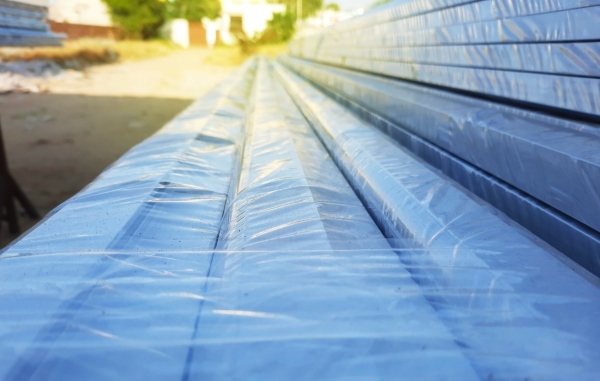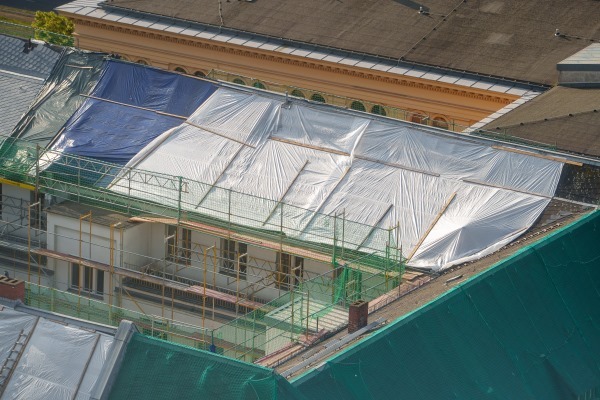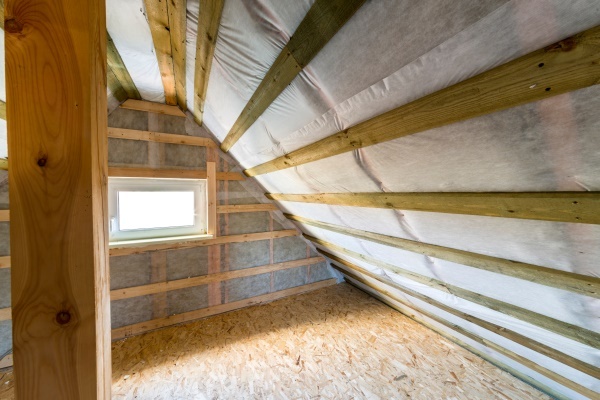
Polythene sheeting is a widely utilised material in construction, known for its adaptability and broad range of applications. Its role spans from providing temporary protection to acting as a long-lasting barrier against moisture and contaminants. This durable and flexible material is popular in construction projects due to its affordability, resilience against tearing and chemicals, and ease of use. Additionally, polythene sheeting is cost-effective, making it an ideal choice for large-scale projects.
Types of Polythene Sheeting in Construction
Polythene sheeting comes in a variety of formats and customisations to cater to diverse construction needs. It is available in rolls up to 4 metres wide, and users can select centre-folded or multi-folded options, making it easy to handle, store, and deploy on-site. For additional convenience, polythene sheeting can feature perforations, allowing for easy tearing into smaller sheets, or can come in pre-cut boxes.
Various specialist additives expand its uses even further. For instance, low-slip and high-slip options are available, as well as high-strength varieties designed for heavy-duty applications. Anti-static polythene is ideal for projects involving sensitive electronic equipment, while fire-retardant sheeting adds a layer of safety. A Volatile Corrosive Inhibitor (VCI) helps prevent rust on metal surfaces, and UV-inhibited sheeting is suited for outdoor use, preventing material degradation and protecting products from harmful sun exposure. Options for punched holes and micro-perforations ensure breathability, reducing fogging and condensation.
Applications of Polythene Sheeting in Construction
Moisture and Vapour Barriers:
 Polythene sheeting is extensively used in construction as a moisture and vapour barrier, particularly beneath concrete slabs, where it prevents moisture infiltration from the ground. By blocking this moisture, it helps avoid damage to flooring materials and enhances the durability of the concrete itself. Additionally, polythene sheeting is used within walls and floors to improve insulation and control vapour diffusion. This application contributes to better interior air quality by reducing dampness and mould growth, which can be problematic in humid environments. Ultimately, polythene sheeting supports a healthier and more stable indoor environment through effective moisture control.
Polythene sheeting is extensively used in construction as a moisture and vapour barrier, particularly beneath concrete slabs, where it prevents moisture infiltration from the ground. By blocking this moisture, it helps avoid damage to flooring materials and enhances the durability of the concrete itself. Additionally, polythene sheeting is used within walls and floors to improve insulation and control vapour diffusion. This application contributes to better interior air quality by reducing dampness and mould growth, which can be problematic in humid environments. Ultimately, polythene sheeting supports a healthier and more stable indoor environment through effective moisture control.
Protection During Construction:
During construction or renovation, polythene sheeting serves as a protective covering for floors, walls, and furniture. It is ideal for shielding surfaces from paint, plaster, dust, and debris, helping to maintain a clean workspace and reduce damage to finishes. Polythene sheeting is also frequently used to create temporary dust and dirt barriers, which separate active work areas from other parts of the site. This barrier function is particularly useful in projects within occupied buildings, where minimising the spread of dust and debris is essential. Using polythene sheeting for these protective measures helps maintain project cleanliness and professionalism.
Temporary Weather Protection:
Construction sites often face unpredictable weather, and polythene sheeting provides a temporary solution for protecting materials and structures. UV-stabilised polythene sheeting is ideal for outdoor use, as it shields materials from the harmful effects of prolonged sun exposure. Additionally, this sheeting can safeguard exposed structures from rain and wind, reducing potential delays and protecting materials from damage. By using polythene sheeting as a weather barrier, construction sites can continue working under challenging conditions and prevent weather-related damage to vulnerable surfaces, ensuring that progress on the project remains on track regardless of the forecast.
Ground Cover and Erosion Control:
Polythene sheeting plays a significant role in erosion control on construction sites, particularly during excavation or landscaping. By covering exposed soil, it minimises erosion caused by wind and water, helping to stabilise the ground and prevent soil loss. This is especially important on slopes and areas prone to erosion. Additionally, polythene sheeting can provide a temporary stable surface for machinery and workers to move on safely, reducing the risk of accidents due to unstable or uneven ground. By addressing erosion and ground stabilisation, polythene sheeting supports a safer, more efficient work environment on site.
Waste Containment:
On construction sites, polythene sheeting is often used to contain and manage waste. Lining dumpsters or waste disposal areas with polythene prevents debris leakage, helping to keep the site clean and organised. It is also commonly used for covering hazardous materials and waste, ensuring safe handling and disposal. This application is crucial for maintaining environmental standards and reducing the risk of contamination. By securely containing waste, polythene sheeting aids in site management and ensures compliance with safety and environmental regulations, making it an essential material for responsible construction practices.
Temporary Roofing and Scaffold Sheeting:
 Polythene sheeting is widely used as temporary roofing or scaffold sheeting on construction sites. It provides a protective layer over roofs under repair, preventing water ingress and weather damage during work. For scaffolding, polythene sheeting creates an enclosure that shields both materials and workers from wind, rain, and other elements. This enclosure function helps maintain a controlled environment, allowing work to continue even in adverse weather. Additionally, scaffold sheeting offers some privacy and security, which is useful in urban construction sites. By utilising polythene sheeting for roofing and scaffolding, construction sites can proceed efficiently and safely.
Polythene sheeting is widely used as temporary roofing or scaffold sheeting on construction sites. It provides a protective layer over roofs under repair, preventing water ingress and weather damage during work. For scaffolding, polythene sheeting creates an enclosure that shields both materials and workers from wind, rain, and other elements. This enclosure function helps maintain a controlled environment, allowing work to continue even in adverse weather. Additionally, scaffold sheeting offers some privacy and security, which is useful in urban construction sites. By utilising polythene sheeting for roofing and scaffolding, construction sites can proceed efficiently and safely.
Advantages of Using Polythene Sheeting in Construction
Polythene sheeting offers numerous advantages for construction projects, making it a preferred material for various applications. Its cost-effectiveness is a key benefit, as it provides an affordable solution for protection and barrier needs, reducing the requirement for more expensive materials. In addition, polythene sheeting is exceptionally durable, with a high resistance to tearing, water, and chemicals, which makes it ideal for the demanding conditions of a construction site. Furthermore, polythene sheeting is lightweight and flexible, allowing for easy transportation and effortless adjustments to suit different uses on-site, adding to its versatility and practicality in construction.
Polythene sheeting is a highly versatile and essential material for construction, serving a wide range of applications from moisture barriers to temporary weather protection. Its adaptability, durability, and cost-effectiveness make it invaluable for protecting surfaces, stabilising grounds, and containing waste on-site. Selecting the appropriate type of sheeting tailored to specific needs can enhance both the effectiveness and efficiency of construction projects. Looking ahead, the future of polythene sheeting lies in advancements such as the use of more recycled materials and the development of innovative additives. These improvements will continue to meet evolving construction demands while supporting sustainability.